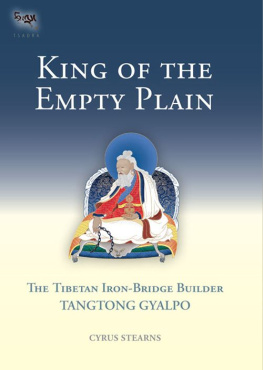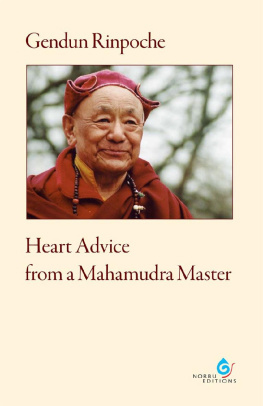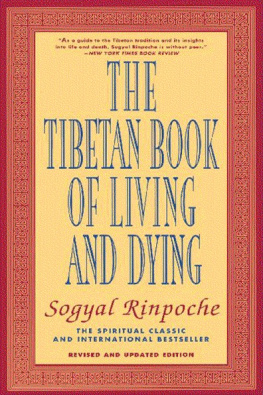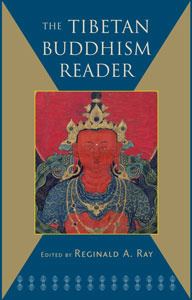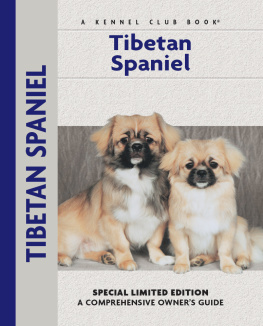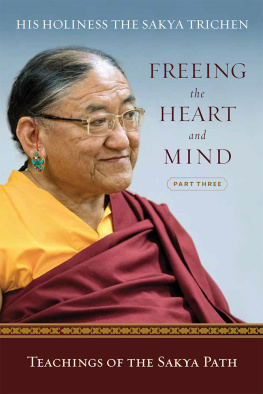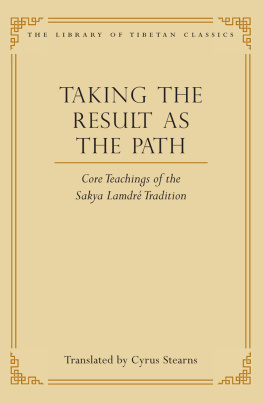Stearns, one of the most respected translators of classical Tibetan texts, beautifully brings to life the story of one of Tibets most inspiring and loved personalities. This book is a must for anyone who is interested in Tibetan culture and history, as well as those who wish to see how the altruistic ideals of the bodhisattva path can be concretely applied in socioeconomic and humanitarian action.
Thupten Jinpa, translator to H.H. the Dalai Lama and author of Self, Reality, and Reason in Tibetan Philosophy
This represents the culmination of many years of patient scholarship and contemplation of the problems of meaningful translation into English.... The author has selected a figure of enormous importance for the cultural context of Tibetan Buddhism. This is a book that will last.
E. Gene Smith, executive director of the Tibetan Buddhist Resource Center
ABOUT THE BOOK
King of the Empty Plain is familiar to every Tibetan yet nearly unknown in the rest of the world. Tangtong Gyalpos incredible lifespan, profound teachings, unprecedented engineering feats, eccentric deeds, and creation of Tibetan opera have earned this fascinating figure a unique status in Tibetan culture. Believed to be the great Indian master Padmasambhava appearing again in the world to benefit living beings, he discovered techniques for achieving longevity that are still held in highest esteem and are frequently taught six hundred years later. His construction of fifty-eight iron suspension bridges, sixty wooden bridges, 118 ferries, 111 stupa monuments, and countless temples and monasteries in Tibet and Bhutan remains an awe-inspiring accomplishment.
This book is a detailed study of the life and legacy of this great master. An extensive introduction discusses Tangtong Gyalpos Dharma traditions, the question of his amazing longevity, his crazy activities manifested to enhance his own realization and to benefit others, and his astonishing engineering and architectural achievements. The book includes a complete translation of the most famous Tibetan biography of Tangtong Gyalpo, as well as the Tibetan text and English translation of a unique early manuscript describing his miraculous death. The text is further enriched with ten color plates and seventy-seven black-and-white illustrations.
CYRUS STEARNS has been a student of Tibetan Buddhism for over thirty-five years. His main Tibetan teachers were Dezhung Rinpoche Chogye Trichen Rinpoche and Dilgo Khyentse Rinpoche. He received a PhD in Buddhist Studies from the University of Washington and is the author of several books including Taking the Result as the Path and King of the Empty Plain . He is currently a fellow at the Tsadra Foundation and lives in the woods on Whidbey Island north of Seattle, Washington.
Sign up to receive weekly Tibetan Dharma teachings and special offers from Shambhala Publications.

Or visit us online to sign up at shambhala.com/edharmaquotes.
T HE T SADRA F OUNDATION S ERIES
published by Snow Lion, an imprint of Shambhala Publications
Tsadra Foundation is a U.S.-based non-profit organization that was founded in 2000 in order to support the activities of advanced Western students of Tibetan Buddhism, specifically those with significant contemplative experience. Taking its inspiration from the nineteenth-century nonsectarian Tibetan scholar and meditation master Jamgn Kongtrl Lodr Tay, Tsadra Foundation is named after his hermitage in eastern Tibet, Tsadra Rinchen Drak. The Foundations various program areas reflect his values of excellence in both scholarship and contemplative practice, and the recognition of their mutual complementarity.
This publication is part of Tsadra Foundations Translation Program, which aims to make authentic and authoritative texts from the Tibetan traditions available in English. The Foundation is honored to present the work of its fellows and grantees, individuals of confirmed contemplative and intellectual integrity; however, their views do not necessarily reflect those of the Foundation.
Tsadra Foundation is delighted to collaborate with Shambhala Publications in making these important texts available in the English language.
K ING OF THE E MPTY P LAIN

... The Tibetan Iron-Bridge Builder ...
Tangtong Gyalpo
Cyrus Stearns
Snow Lion
Boston & London
2014
Snow Lion
An imprint of Shambhala Publications, Inc.
Horticultural Hall
300 Massachusetts Avenue
Boston, Massachusetts 02115
www.shambhala.com
Copyright 2007 Tsadra Foundation
Cover Design: Rafael Ortet
All rights reserved. No portion of this book may be reproduced by any means without prior written permission from the publisher.
Library of Congress Cataloging-in-Publication Data
Gyur-med-bde-chen, Lo-chen, b. 1540.
[Dpal grub pai dba phyug chen po Lcags zam pa Tha sto rgyal poi rnam par thar pa o tshar kun gsal me lo gsar pa. English]
King of the empty plain: the Tibetan iron-bridge builder Tangtong Gyalpo / Cyrus Stearns.
p. cm. (Tsadra Foundation series)
Includes bibliographical references and index.
eISBN 978-1-5593-9837-4
ISBN-13: 978-1-55939-275-4 (alk. paper)
ISBN-10: 1-55939-275-4 (alk. paper)
1. Tha-sto-rgyal-po, 15th cent. 2. LamasChinaTibetBiographyEarly works to 1800. I. Stearns, Cyrus, 1949- II. Kun dga bsod nams grags pa dpal bza. Grub thob chen poi rnam thar phyi ma mya an las das pai skor. English & Tibetan. III. Title.
BQ990.H367G8813 2007
294.3923092dc22
[B]
2007013655
C ONTENTS

by Lochen Gyurm Dechen
by Kunga Snam Drakpa Palsang
English Translation and Tibetan Text

This book contains diacritics and special characters. If you encounter difficulty displaying these characters, please set your e-reader device to publisher defaults (if available) or to an alternate font.
This book is humbly dedicated to my teachers:
Dezhung Rinpoch (190687),
Dilgo Khyents Rinpoch (191091),
and Chogye Trichen Rinpoch (19192007).
...

O NE DAY IN 1974 I was sitting with my teacher Dezhung Rinpoch in the living room of his home in Seattle. I had been enthralled by Rinpochs eloquent, profound, and hilarious stories about the renowned Tibetan master Tangtong Gyalpo for the last year or so. He often told these tales in private conversation, or while explaining Tangtongs practice for meditation on Avalokitevara, or when bestowing the great adepts ritual blessing for longevity. Tangtongs biography had been one of Rinpochs favorite books in Tibet, although he had not seen the work since fleeing his homeland in 1959. I had recently come across the biography among the uncatalogued microfilm collection of Tibetan works at the University of Washington. When I mentioned this to Rinpoch, he began to quote from memory a long series of verses from the text. Then he wrote for a moment in a small notepad, tore off the sheet, and handed it to me, saying, Look for this!
On the mountain of the illusory body
Next page
